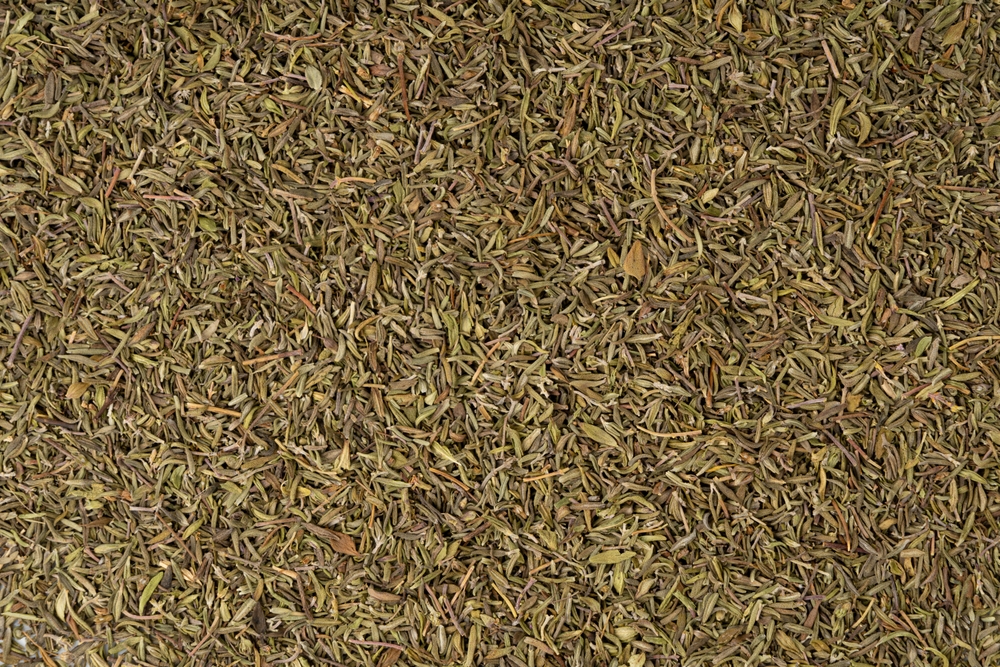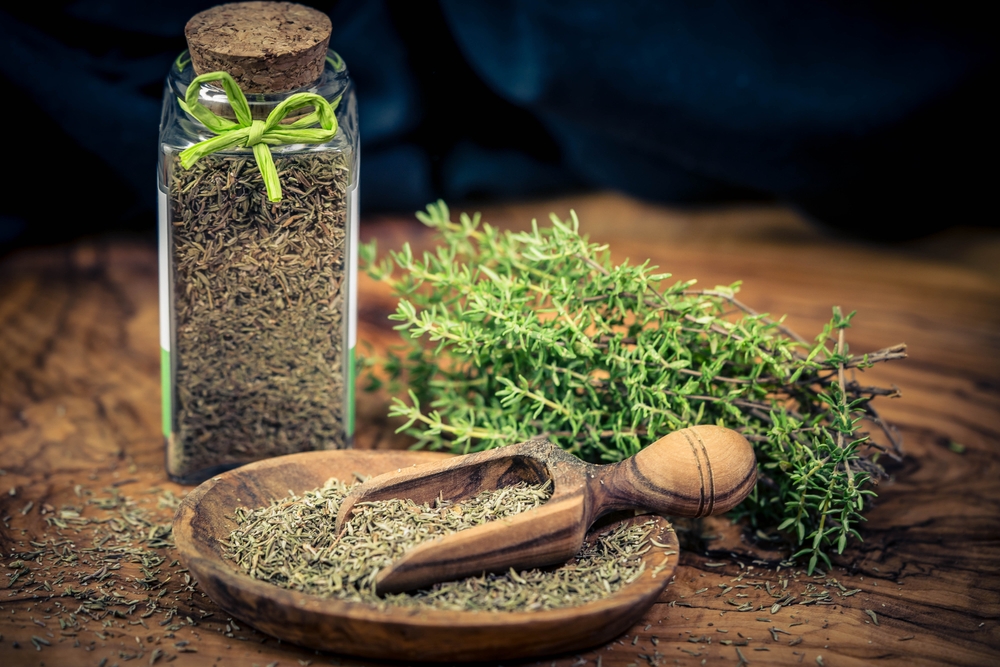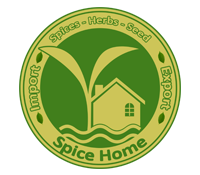Thyme (Thymus vulgaris) is a small, perennial herb that has been cherished for centuries for its aromatic, medicinal, and culinary qualities. Native to the Mediterranean region, thyme is known for its strong, earthy fragrance and slightly minty flavor. Today, it is grown and utilized globally, not just for its flavor but also for its numerous health benefits. Whether used in cooking, as a medicinal herb, or as an ornamental plant in gardens, thyme is a truly versatile herb.

Cultivation of Thyme
Growing Conditions
Thyme thrives best in warm, sunny climates, reflecting its Mediterranean origins. It requires well-drained soil with a pH between 6.0 and 8.0 and can tolerate poor, rocky soils, making it a hardy option for gardeners. Thyme does well in both garden beds and pots, offering flexibility for growers with limited space. It is also drought-tolerant, making it suitable for xeriscaping (gardening that reduces the need for irrigation) and areas with less frequent rainfall.
Planting Thyme
Thyme can be grown from seeds, cuttings, or root divisions. Starting thyme from seeds can be slow, as the germination rate is low. However, once the seedlings appear, they require little attention beyond occasional watering and weeding. If you prefer faster results, using cuttings from an established thyme plant is an excellent option. Planting is typically done in spring when the risk of frost has passed, but in warmer climates, thyme can be planted almost year-round.
Maintenance
Thyme is a low-maintenance plant. It does not require frequent watering once established and thrives in full sunlight. It’s crucial to avoid overwatering, as thyme prefers dry soil and is susceptible to root rot in overly moist conditions. Pruning thyme regularly encourages bushier growth and ensures the plant remains healthy.
Because thyme is a perennial, it will return year after year if properly maintained. During the winter, thyme can endure light frosts, but in colder climates, providing some protection or bringing potted plants indoors may be necessary.
Harvesting and Storage
Thyme can be harvested throughout the growing season, typically starting from early summer. For the best flavor, it is ideal to harvest thyme in the morning after the dew has dried. The leaves are at their most fragrant and potent just before the plant blooms.
Once harvested, thyme can be used fresh or dried for later use. To dry thyme, tie the stems in small bundles and hang them in a cool, dark place with good air circulation. Once dry, strip the leaves from the stems and store them in an airtight container.
Uses of Thyme
Culinary Uses

Thyme is a staple in kitchens worldwide, particularly in Mediterranean, French, and Middle Eastern cuisines. Its strong, earthy flavor complements a wide range of dishes. It is commonly used to season meats, especially lamb, chicken, and fish. Thyme also pairs well with root vegetables, potatoes, and tomatoes, adding depth to soups, stews, and sauces.
One of thyme’s most famous culinary uses is in the French herb mixture Herbes de Provence, which often includes thyme along with rosemary, marjoram, and oregano. In the Middle East, thyme is a key ingredient in the spice blend Za’atar, a mix of dried thyme, sumac, sesame seeds, and salt.
Thyme also pairs well with citrus, enhancing its tangy flavor, and is often used in marinades for seafood or in infused oils and vinegars.
Medicinal Uses
Thyme has long been valued for its medicinal properties. It contains thymol, a powerful compound with antiseptic, antifungal, and antibacterial properties. In traditional medicine, thyme has been used to treat respiratory conditions such as coughs, bronchitis, and colds. Thyme tea is a popular remedy for sore throats and digestive issues, offering soothing relief.
Modern studies suggest that thyme may also possess antioxidant and anti-inflammatory qualities. These properties contribute to thyme’s potential to aid in reducing inflammation and promoting general wellness.
Aromatherapy and Essential Oils
Thyme essential oil is a popular choice in aromatherapy due to its invigorating and cleansing properties. The oil is often used to promote mental clarity, reduce fatigue, and purify the air. Because of its antiseptic properties, thyme oil is also incorporated into natural cleaning products and skincare routines to combat bacteria and promote healthy skin.
Ornamental Use
Beyond its culinary and medicinal uses, thyme is often grown as a decorative plant. Its small, aromatic leaves and tiny, colorful flowers (ranging from white to pink and purple) make it an attractive addition to gardens. Thyme’s ground-covering growth habit is perfect for borders, rock gardens, and pathways, where it can spread and create a lush, fragrant carpet.
Summary
Thyme is an herb that excels in both form and function. From the kitchen to the medicine cabinet to the garden, thyme provides a host of benefits for the modern home. Its ease of cultivation, combined with its many uses, makes thyme a valuable addition to any herb garden. Whether you’re seasoning a dish, seeking natural remedies, or enhancing your landscape, thyme proves itself a timeless herb with a wide range of applications.
